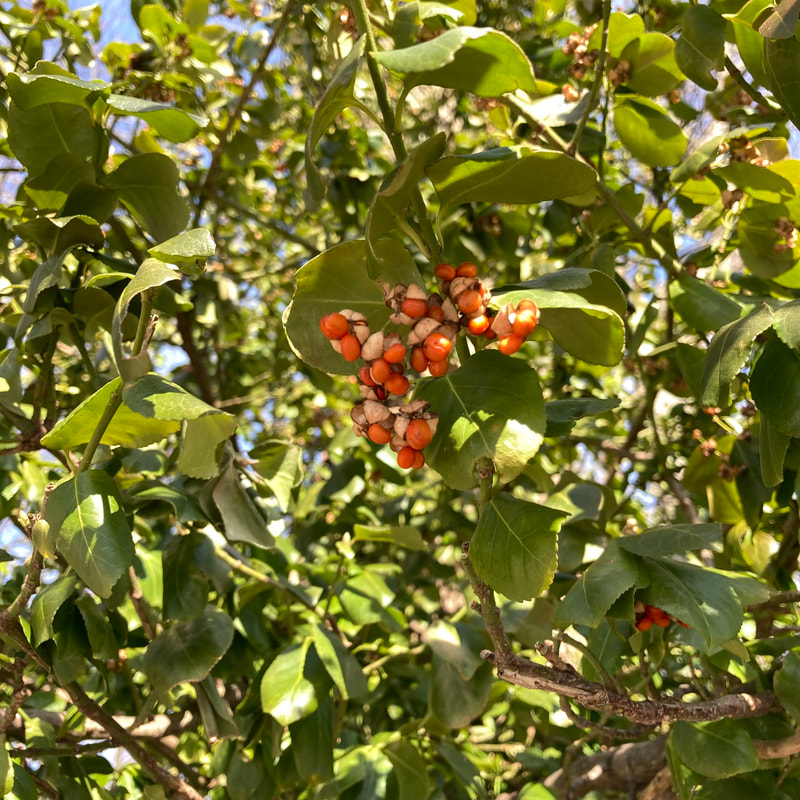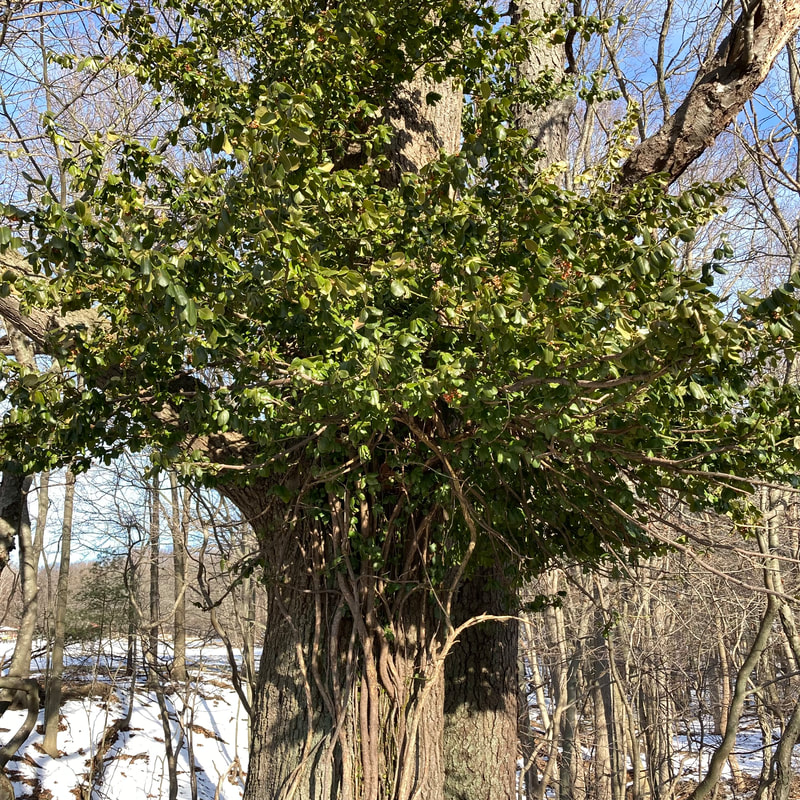|
Photo and article by Donna Iverson In the winter landscape, it’s the colorful berries that stand out to a gardener’s eye. Take for example the American bittersweet with their bright yellow-orange berries hanging at the end of vine-like branches. American Bittersweet (Calastrus scandens) is a native perennial vine that attaches itself to trees in the Upper Midwest states of Minnesota, Wisconsin, and Michigan. It can be found in woods, swamps and along field edges. It can grow to 30 feet and has dark green oval leaves with serrated edges. The leaves are two to four inches long with a pointed tip. Vines are either male or female and you need both to produce berries. Although there is a new hybrid out of Minnesota called Bailumn that produces male and female vines on the same plant. American Bittersweet is extremely drought tolerant once it is established. It prefers full bright sun and is slow growing. American Bittersweet is not invasive unlike the Oriental Bittersweet that smothers plants and trees. In the wild, you can distinguish the two by where the berries grow. On the American Bittersweet the berries grow at the end of the branches while in the Oriental variety, they grow along the stem. Oriental Bittersweet also has thorny stems which American Bittersweet does not. Foragers should note that American Bittersweet is mildly toxic and should not be eaten. Although the berries provide winter food for grouse, pheasants, quail, rabbits, birds and squirrels.
0 Comments
Your comment will be posted after it is approved.
Leave a Reply. |
Archives
April 2024
Categories |


 RSS Feed
RSS Feed